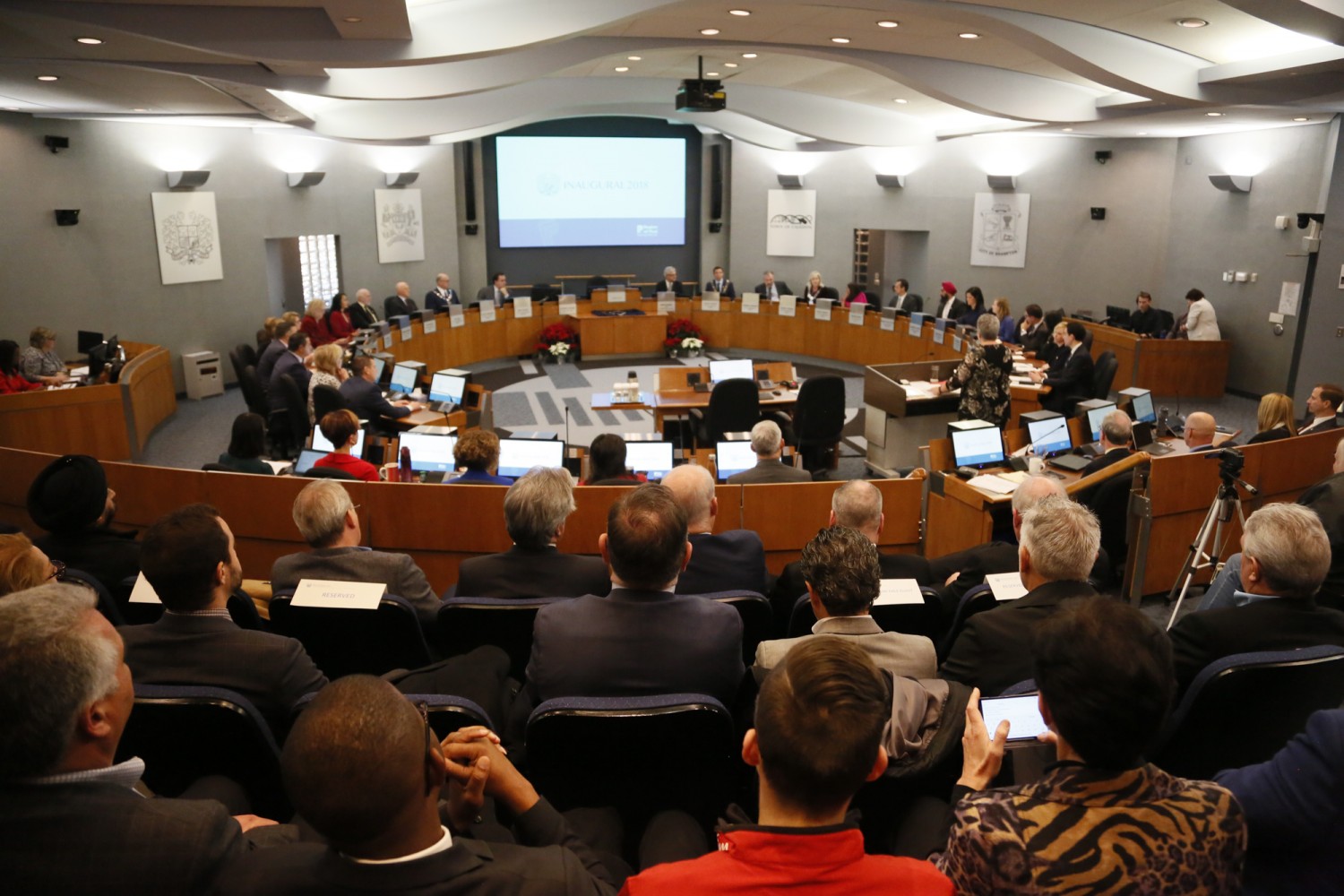
Regional councillors demand reimbursement for cost of sheltering refugees
It is no secret that Peel’s shelter system is strained. The Pointer’s inquiries this winter have found the city’s five shelters always full or on the verge of being filled.
But there is another factor adding to the overburdened system, and that is the influx of refugees coming to Canada, boosted considerably by the federal government’s rapid admission of 62,000 refugees from the Syrian conflict over the three years ending last December — more than 12,000 of whom landed in Toronto.
Peel Region took on providing assistance to 28 families last year who were relocated from Toronto, some 91 individuals. The lion’s share of the cost to accommodate them was put toward rooms, which was $182,835.
The regional department of human services, which handles shelter supports in Peel, estimates that, overall, “$1,320,443 was spent to provide refugees and refugee claimants with accommodation, meals, staff support and other shelter services in 2018. An additional $412,172 was used to support refugee claimants (the 28 families) transferred from Toronto.”
Those 28 families were, according to the same update, housed in Peel Family Shelter’s overflow facilities, consisting of motels and hotels. That shelter lodging is the only one in Peel that outsources overflow capacity to motels.
Another 33 families and 96 singles (225 individuals), were also relocated from Toronto to Peel by the federal government. The report, however, does not provide a breakdown of expenses incurred for accommodating these people. Fortunately, “As of Dec. 1, 2018, all transferred refugees/refugee claimants had secured permanent housing and vacated the shelter,” according to a regional report.
But promised funding to ease the burden of refugees on the city’s resources hasn’t appeared.
“Despite earlier indications that municipalities may be reimbursed by the City of Toronto or the federal government for supports provided to refugee claimants, no such funds have been received to date,” said a summary of the report submitted to council on Thursday.

Regional Councillor Annette Groves
“We are owed over $400,000 from the federal government, and since they are the one who decided to do this, they need to pay us,” Caledon Councillor Annette Groves told The Pointer.
“We’ve had discussions at the region for many years that we are terribly underfunded, we have residents in Peel Region that need help, and so if the federal government is going to make these decisions—or provincial government, for that matter—they need to pay up.”
There has been a steady increase in regional shelter use. A July 2018 regional report shows that the number of refugees using Peel’s shelter system had been rising since 2015, the earliest available data. However, the number of asylum seekers peaked in 2018. There were roughly 1,127 refugee claimants among the 9,566 clients of the system that year, up 12 percent from the previous year.
Last July, council adopted a motion which, in part, directed staff to “work with the City of Toronto to provide shelter space (to refugees transferred from Toronto) if available … . And further, that the Commissioner of Human Services be authorized to enter into funding agreements with the federal government or other levels of government for the provision of accommodation, services and programs to refugees/asylum claimants.”
While the motion directs the commissioner of human services to enter into funding agreements with other levels of government, and the report mentions promises by the City of Toronto and the feds, it is not clear if any agreements were entered into or even whose responsibility it is to reimburse the region.
Even though Toronto has a far higher shelter capacity than Peel, its shelter system is also stretched near its limit. The city reported on Feb. 13 that shelters were chronically low on available beds. Family shelters had the lowest occupancy rate, with 86 percent. The rest were either well into the 90 percent-plus range or completely full, similar to Peel.
The added strain newcomers place on Toronto’s safety net has not gone unnoticed. Last month, the federal government gave Toronto $15 million to help ease the load on resources.
Mayor John Tory said at the time, “We are working to help refugee claimants and asylum seekers who arrive in Toronto, but we have been clear that we cannot do this alone.”
Ironically, Toronto enlisted the help of Peel so it would not have to “do this alone.” Similar federal funding for Peel has not been forthcoming.
Brampton Mayor Patrick Brown agreed with Groves that, “obviously, it is appropriate for the cost to be reimbursed.” He said he was meeting with federal partners to get help on the issue.
“We’re getting a handle on the numbers. I’ve already had a meeting with Bill Blair, who is the federal member of parliament who has been tasked with this lead. He arranged the funding for the City of Toronto,” he told The Pointer.
The lack of support from senior governments “is symptomatic of a greater issue, which is, across the board, having been one of the fastest growing regions. The population has grown but our funding has not grown at the same rate,” Mississauga Regional Councillor Dipika Damerla told The Pointer. She said “We are a long way from getting our fair share.”
The report says the number of refugees accessing local resources is shrinking, but newcomers do continue to present a financial challenge on the region and its shelter system.
While the numbers paint a bleak picture, the region will continue to support and welcome refugees within its jurisdiction. Groves reaffirmed that commitment when she said, “Peel Region, as the report stated, they have absolutely no issues in welcoming refugees. But at the end of the day we’ve got to take care of home as well.”
Email: [email protected]
Twitter: @mansoortanweer
Submit a correction about this story


